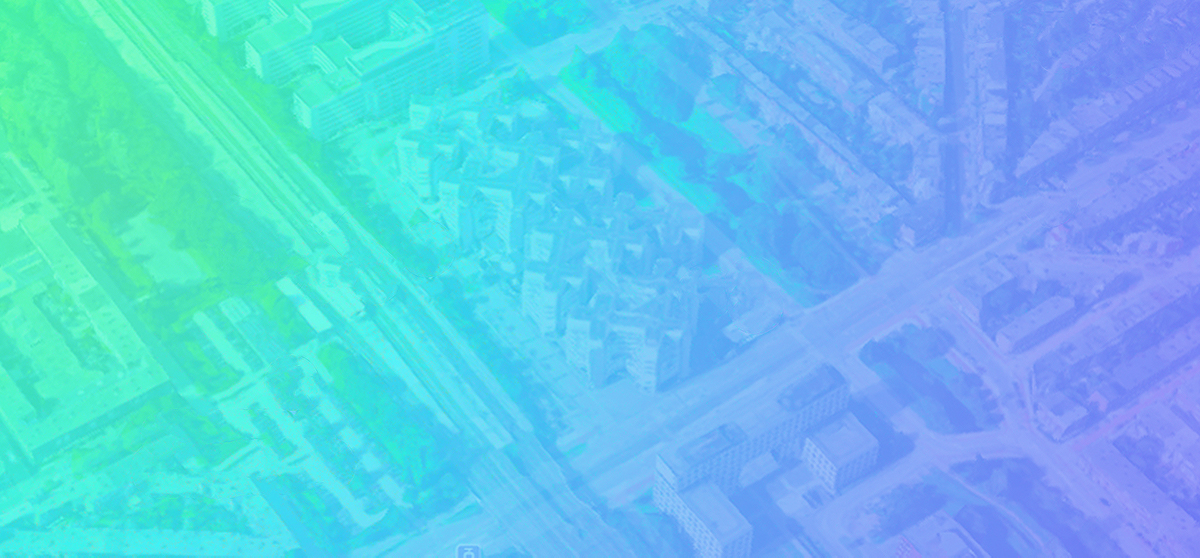
How might we ensure that social cohesion and the well being of Laan Van NOI's future residents is put at the center of its redevelopment?
The Laan Van NOI area, one of three key gateways into The Hague's Central Innovation District (CID), is soon to be renovated. The CID is the economic heart of The Hague and the region and holds enormous potential. The area already provides employment for nearly 80,000 people and has 30,000 students. 45,000 people live in the area in 23,000 homes.
This plan aims to raze the current structure to overhaul its current mix-use building and parking infrastructure into a dense but car-free area on both sides of the current train station. According to the current Structuurvisie document, "It will be an area where the boundaries between recreation, living and working are blurred. Where compaction and greening go together."
However, the sense isolation and its impact on mental health that the Covid-19 pandemic has exacerbated has made the city realize that its vision did not sufficiently address these issues. The municipality of The Hague therefore asked the Kennis Maken Den Haag to advise them on redevelopment of the Central Innovation District to better integrate strategies to stem loneliness, provide opportunities for social cohesion and take into account the importance of green areas.
Collaborative Troubleshooting
The five day workshop challenged students from Haagse Hogeschool, Erasmus and Leiden University, to unpack the Structuurvisie for the Laan Van NOI area and try to imagine who may be overlooked by the current vision. This approach heavily drew from the works of Sara Hendren and Rosemarie Garland-Thomson on the concept of states of misfit and action settings. The students went through several exercises of research, observation, and digital prototyping to arrive at a final set of narratives.
The whole experience was kicked off with a visit to the Laan Van NOI followed by several facilitated exercises held remotely using this Miro board.
The students were tasked with looking most specifically at the topics of loneliness
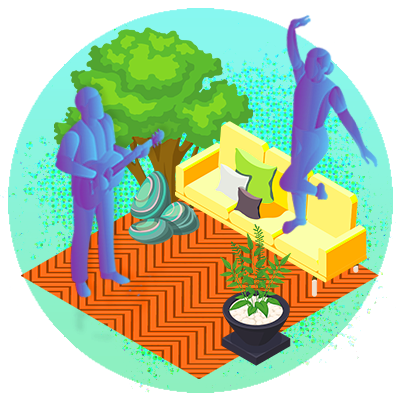
REDUCING LONELINESS
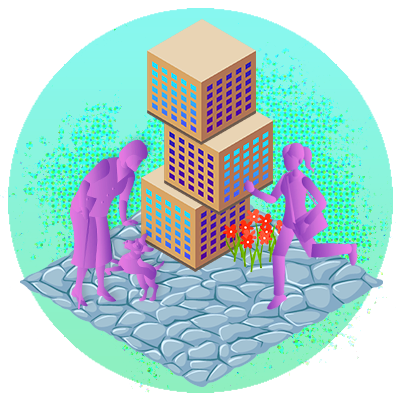
ENCOURAGING SOCIAL COHESION
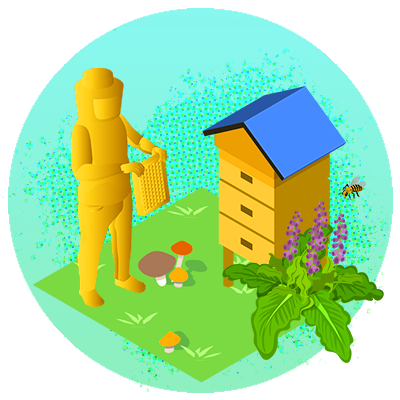
MAKING NEIGHBORHOODS GREEN AND HEALTHY
Spotlighted stories
In the end, the students decided to explore how health and social cohesion could be ensured for all residents by focusing on specific vulnerabilities that might exacerbate the residents' risk of finding themselves in a state of "misfit".
The exercise raised questions of navigability, personal isolation, safety of movement, and the experience of visitors unfamiliar with the area.
How might David, a recently divorced individual, connect to new people and stay healthy on the weekend in tomorrow’s Laan Van NOI?
When designing for someone like David, we want to improve his living environment and ensure that he will easily meet new people and stay healthy. We took inspiration from projects like Waterpop a music event in the local parks. There’s free entry and people connect with each other through music, food or other experiences. The other example we drew from is Boeren en buren which enables residents to meet their neighbors and buy vegetables and fruit from farmers at a weekly pick up point in a neighborhood.
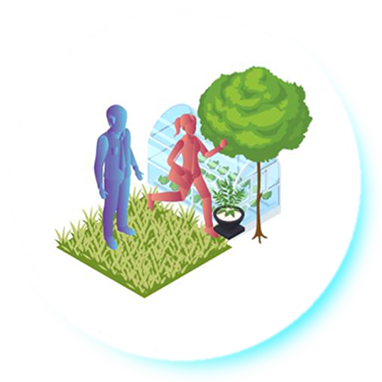
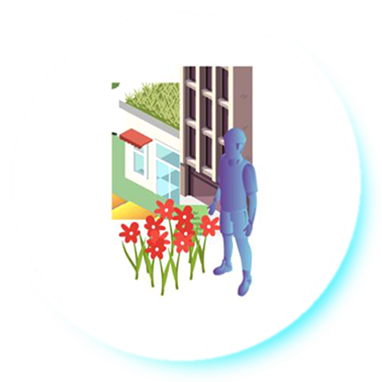
How might Mitch, an eleven year old, pick a flower on their walk home from school in tomorrow’s Laan Van NOI?
When designing for someone like Mitch, we want him to have access to nature and ensure that he can go from school to home safely even if he lives outside the Laan Van NOI area. We'd ensure this by having him walk through a car-fee neighborhood for most of the way to school. Florisdorf in Vienna offers a good example of what a car-free neighborhood might look like. In addition to safety, it also is environmentally friendly. We want kids his age to have convenient access to nature so we designed a community garden. This is what the NGO Denver Urban Gardens (DUG) does in Colorado, USA. Research has shown that their garden initiatives foster both public health and community feeling.
How might Lia, a young visually impaired woman, navigate the city while having meaningful interactions in the neighborhood and connecting with new people in tomorrow’s Laan Van NOI?
When designing for someone like Lia, we want to and ensure that she can easily navigate the streets of Laan Van NOI while feeling safe and comfortable both day and night. We drew inspiration from responsive urban furniture prototypes, new devices which would provide audio-guidance and other support services, as well as other urban interventions which highlight the perks of tactile paving for the mobility of people with visual impairments.

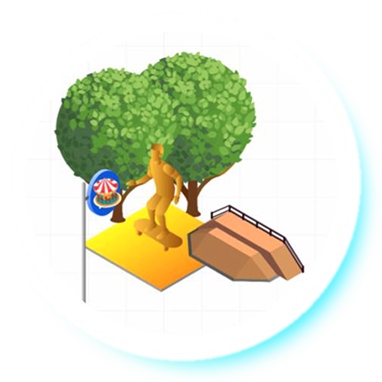
How might Antonio, a non-Dutch speaking child that just moved to the area, safely get around as a pedestrian in a car-free area, while looking for new friends to socialize and play with in tomorrow's Laan Van NOI?
When designing for someone like Antonio, we want to create an easier way of reaching friends and ensure that children can play outside together, even when they do not speak Dutch. Places like airports, do this by creating color-coordinated pathways showing the way to terminals and gates. Places like Barcelona do this by ensuring that the occurrence of traffic accidents are reduced through limiting where cars are allowed.
Design Principles
The workshop resulted in the formulation of the following series of design principles that were voted on by the participants to be included, or strengthened in the Structuurvisie document.


This Laan Van NOI future-proofing exercise was designed and facilitated by Hugo Pilate for City Deal Kennis Maken Den Haag, made possible by the City Deal Corona Challenge.
🙏
And a big thank you to all the faculty who made this possible, Annet van Otterloo, Katja Rusinovic, Jetse Siebenga, and all the students who participated: Merel van Santvoort, Sophie van Opstal, Clara Mensen, Hanna Persson, Nadia Grela, Alara Ycel, Matteo Fabris, Jonathan Thierfelder, Hansoo Lim, Nick Pole, Liz Yau, Frida Vartio, Piet Vossler, Veda Diemel, Fleur Westhoff, Elvis Greif, Ole Siever, Gonçalo Araújo, Gianna Pia Schreiber, Teodora Pariza.